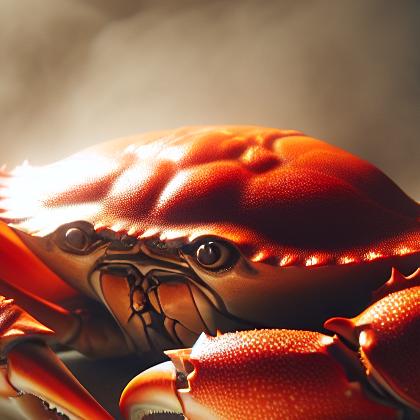Showing results for 'Cooked crab'
close
Cooked Crab

Crabs are decapod crustaceans of the infraorder Brachyura, which typically have a very short projecting "tail" (abdomen) (Greek: βραχύς / brachys = short, οὐρά / οura = tail), usually entirely hidden under the thorax. They live in all the world's oceans, in fresh water, and on land, are generally covered with a thick exoskeleton and have a single pair of claws. Many other animals with similar names – such as hermit crabs, king crabs, porcelain crabs, horseshoe crabs and crab lice – are not true crabs.
Cooked crab Properties:
| Food Property | Type | Description |
|---|---|---|
| Flavor Profile | Umami | Cooked crab has a rich savory taste due to its high levels of naturally occurring umami compounds. |
| Texture | Firmness | Cooked crab meat is firm and slightly chewy, with a satisfying texture that holds up well in various dishes. |
| Nutritional Value | Macronutrients | Cooked crab is a good source of protein, with low amounts of fat and carbohydrates. |
| Micronutrients | Cooked crab is rich in essential nutrients such as vitamin B12, selenium, and zinc. | |
| Fiber | Cooked crab contains minimal amounts of fiber. | |
| Color | Natural Pigments | Cooked crab has a reddish to orange hue naturally. |
| Aroma | Volatile Compounds | Cooked crab has a distinct seafood aroma that is both briny and sweet. |
| Chemical Composition | Acidity/Alkalinity (pH) | Cooked crab has a slightly alkaline pH level. |
| Cooking Behavior | Heat Conductivity | Cooked crab has good heat conductivity, making it easy to cook evenly. |
| Water Retention | Cooked crab tends to retain moisture well when cooked properly. |
Food Pairing App - Version 1.2.0
